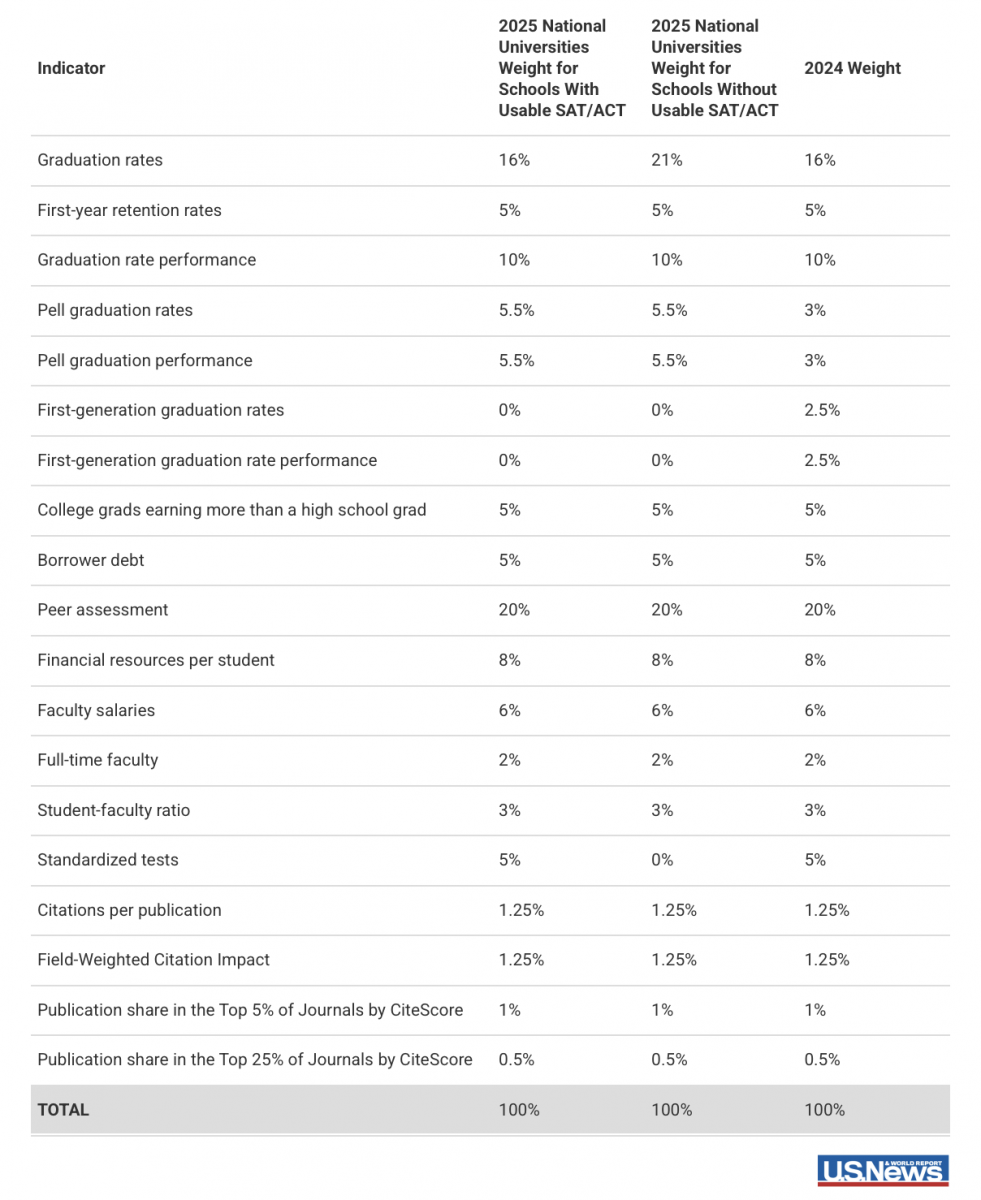
Debunking Myths: Do You Really Understand U.S. College Rankings?
When applying to universities in the United States, referring to college rankings is a common practice for many. From the highly authoritative U.S. News & World Report to the QS World University Rankings, these lists often serve as benchmarks. However, since each ranking organization uses different criteria for evaluation, the question “Who truly decides?” frequently lingers in people’s minds. In reality, rankings are not the sole measure of a university’s quality. We should let go of an obsession with rankings because, despite their seemingly objective nature, various factors influence the positions. Focusing solely on rankings might cause us to overlook more important, genuine aspects, potentially missing out on the school that is truly the best fit.
Understand how the rankings were calculated:
The rankings methodology changes from year to year. Take the 2025 U.S. News & World Report National Universities Rankings for example, there are 17 factors and they weight differently in calculation.

If some of the criteria are not of your interest, then the rankings probably do not speak to you. For example, international students are not eligible for Pell Grant and loans, so the weights in Pell Graduation Rate, Pell Graduation Performance, and Borrower Debt do not necessarily come with a result that is as appealing as weighting the SAT or ACT, which "measure a school's ability to attract students who can handle rigorous coursework."
Before referring to rankings, understand the differences between public and private universities:
There are over 4,000 universities and colleges in the United States. Beyond distinctions such as four-year and two-year programs, schools are also categorized as public or private institutions.
The key differences between public and private universities are:
1. Source of Funding
Public universities primarily receive funding from federal, state, and local governments, which is why they are also called state universities. Private universities, on the other hand, rely on donations from entities such as churches, alumni associations, corporations, and foundations, as well as tuition paid by students.
2. Historical Background
Generally, private universities have a longer history than public ones. For example, over half of the Ivy League schools were established during the colonial era. Public universities began to emerge and gain prominence after the 19th century.
3. Campus Size
Public universities in the U.S. tend to have larger campuses and higher student populations compared to private institutions. Due to state government funding, public schools often feature more extensive campus facilities and serve more students. Private universities, often located in urban centers due to their historical context, tend to have smaller campuses and fewer students. One hallmark of private universities is their small class sizes.
4. Tuition Costs
Public universities, subsidized by government funding, typically have lower tuition fees than private universities. In general, public universities are designed to serve local students, so in-state tuition is lower than out-of-state tuition. In contrast, private universities often charge over $40,000 per year in tuition. Additionally, since many private universities are located in urban areas, living expenses can also add up significantly.
5. Student Demographics
Public universities aim to ensure access to educational resources for local students and prioritize in-state applicants. They also consider out-of-state and international students to promote cultural diversity. Private universities, free from geographical constraints, have no such limitations on student demographics. However, this difference does not imply that public universities are of lower quality than private ones. Each school conducts a rigorous review process when evaluating applicants.
Breaking the Myths Between Public and Private Universities
The perceived prestige gap between public and private universities has long been a topic of debate. In the U.S. News university rankings, the top spots were predominantly occupied by private universities—a trend that has remained consistent over the years. This has led many to believe that private universities in the U.S. are inherently better than public ones. However, this perception does not align with reality.
Public universities are primarily funded by state governments through tax revenues, with additional support from federal government grants for research, equipment, and student aid. On the other hand, private universities rely heavily on donations from alumni, foundations, and other organizations, supplemented by tuition fees, which are often significantly higher than those at public universities.
In recent years, due to global economic shifts, government funding for public higher education in the U.S. has fallen below historical levels. These budget cuts have forced public universities to reduce need-based and merit-based scholarships for students. faculty numbers, and academic programs, placing them at a disadvantage compared to private universities with more robust financial resources. As a result, public universities often rank lower than private universities, even when other factors are relatively equal.
When referencing university rankings, avoid focusing on a single criterion. Instead, consider a comprehensive range of factors, such as academic programs, locations, facilities, faculty-to-student ratios, and scholarly reputation. The most important step to build a balanced college list is to clarify your own goals and identify diverse metrics that align with your values and aspirations.
閱讀中文版文章:破解迷思:你真的了解美國大學排名嗎?
High School Counseling & College Application Guidance Program
